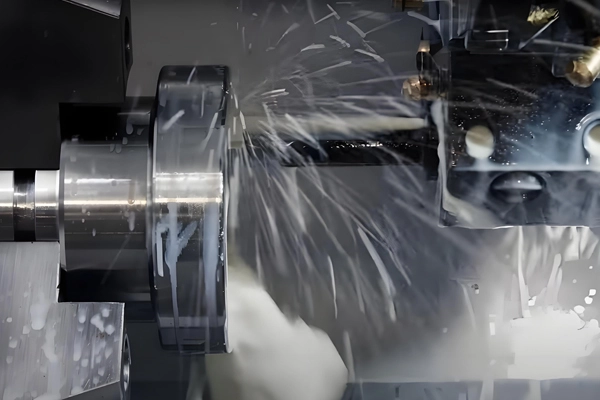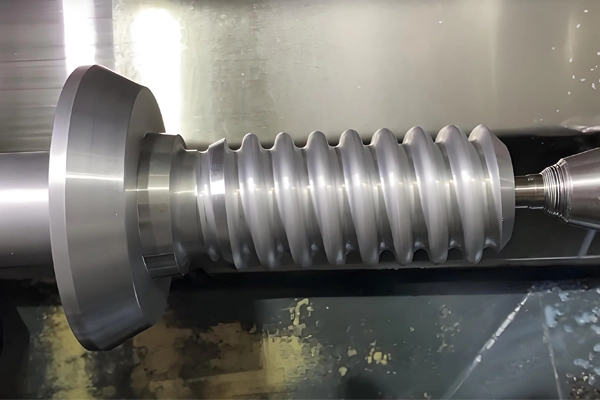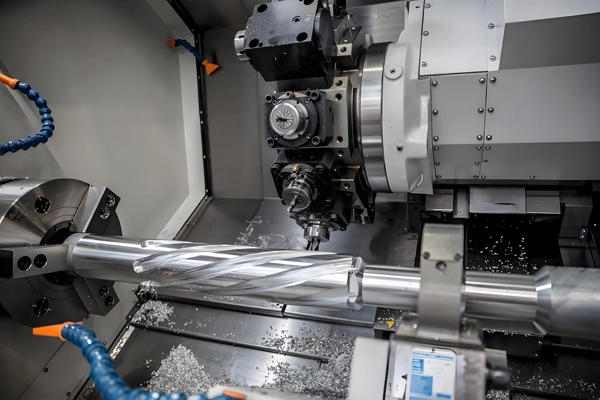Applications of CNC Broaching for Castings and Forgings
1. Keyways and Key Seats:
CNC broaching is commonly used to create keyways (grooves for keys) or key seats on shafts and other components in castings and forgings, especially for the automotive and manufacturing industries. The broached keyways are used to fit parts such as gears, pulleys, and couplings securely to shafts.
2. Spline Broaching:
Broaching is used to create external and internal splines on components, which are critical in applications requiring high torque and efficient power transmission, such as in automotive drive shafts and gearbox components.
3. Internal Grooving:
Broaching is used for creating precise internal grooves in castings and forgings, such as those needed for O-rings, seals, or other sealing mechanisms. This is especially important in the oil and gas, aerospace, and automotive sectors.
4. Surface Profiling:
CNC broaching can produce complex surface profiles on castings and forgings, such as forming irregular shapes or enhancing surface texture, often used for critical, high-performance applications where precision is crucial.
5. Bore Broaching:
CNC broaching is used for machining internal bores with complex profiles, ensuring that the bores are round, dimensionally accurate, and have smooth finishes. This process is particularly useful for components like bushings, bearings, and couplings.
6. Hole Broaching:
CNC broaching can also be used for producing accurate, high-quality holes, such as those used for pin holes or bolt holes, especially in large castings and forgings that require high-volume hole production with tight tolerances.
7. Taper Broaching:
Recommended Machines for CNC Broaching
1. CNC Broaching Machines:
Mitsubishi Broaching Machines: Mitsubishi offers high-precision broaching machines, including models like the Mitsubishi BK Series, which are designed for producing keyways, spline profiles, and other internal and external features with high accuracy and efficiency.
Toshiba Broaching Machines: Toshiba's broaching machines are known for their rigidity and precision, ideal for high-performance broaching of hard materials like castings and forgings.
Broaching Systems (Bettinelli, PBR): Bettinelli and PBR manufacture specialized CNC broaching machines capable of high-speed, high-precision broaching operations, often used for automotive, aerospace, and heavy machinery components.
2. CNC Vertical and Horizontal Machining Centers with Broaching Capabilities:
Haas VF Series (Vertical Milling Machines): Haas offers versatile machining centers capable of performing broaching operations. These machines, equipped with the right tool heads and software, are ideal for smaller to medium-sized components.
Mazak Integrex Series: These machines combine turning and milling capabilities with broaching options, allowing for efficient, integrated broaching operations on complex castings and forgings.
Okuma MB Series (Horizontal Machining Centers): Okuma's horizontal machines, equipped with specialized broaching heads, are capable of high-performance broaching in both high-precision and high-volume production settings.
3. Rotary Broaching Machines:
Accu-Drive Rotary Broaching System: This system attaches to CNC lathes and mills and is used for cutting small, precise holes and profiles, including keyways and splines, within castings and forgings. It's ideal for high-speed and cost-effective broaching on parts with complex geometries.
4. CNC Shaping Machines with Broaching Functionality:
Dimensional Inspection Measures
1. Coordinate Measuring Machines (CMM):
CMM with Contact and Non-Contact Probes: A CMM is used to inspect critical dimensions of broached features, such as the depth of keyways, the width of splines, and the concentricity of broached holes. The machine checks for dimensional accuracy, profile, and alignment.
Zeiss Contura CMM: Known for its high precision, the Zeiss Contura is often used for inspecting castings and forgings with broached features, ensuring that every detail of the broached profile meets the design specifications.
2. Surface Finish Measurement:
Surface Roughness Testers (e.g., Mitutoyo Surftest): After broaching, surface finish is an important consideration, especially for applications that require smooth surfaces. Surface roughness testers can measure Ra, Rz, and other parameters to ensure that the broached surface meets required specifications.
3. Profile Projectors:
Optical Profile Projector: A profile projector is used for visually inspecting the broached features, ensuring that the shape, size, and dimensions of the keyways, splines, or profiles are in alignment with the blueprint specifications.
4. Micrometers and Calipers:
Vernier Calipers, Bore Gauges, and Micrometers: These tools are used to measure specific dimensions like the width of the keyway or the diameter of broached holes. They are ideal for quick checks during production runs.
5. Thread and Keyway Gauges:
Inspection Reports
1. First Article Inspection (FAI):
Initial Inspection Report: A comprehensive FAI report that includes dimensional verification of the broached features such as keyway depth, spline form, and hole accuracy. The report confirms the part’s adherence to design specifications.
GD&T Inspection Report: The inspection report includes a detailed analysis of the broached features in terms of geometric dimensioning and tolerancing (GD&T), including flatness, perpendicularity, and concentricity.
2. Thread and Keyway Inspection Report:
This report contains specific measurements of keyways, splines, or threads, including the width, depth, and angle of the cut, ensuring that the features are within the tolerance range.
3. Material and Hardness Reports:
4. Surface Finish Report:
Quality Control Measures
1. Pre-Broaching Inspection:
Before broaching begins, the raw casting or forging is thoroughly inspected for defects such as cracks, inclusions, or dimensional irregularities that could affect the quality of the broached features.
2. Tool Condition Monitoring:
Broaching requires specialized tooling (broach tools), which are subject to wear. Regular monitoring of tool condition ensures consistent performance throughout the production cycle, and tools are replaced or reconditioned as necessary to maintain quality.
3. In-Process Monitoring:
During broaching, the machine monitors various parameters, such as feed rate, cutting speed, and tool wear. For large-scale or high-precision applications, in-process sensors can detect issues like tool wear, preventing part defects or damage.
4. Post-Broaching Inspection:
Once the broaching process is complete, all broached features are inspected for dimensional accuracy and surface finish. Non-destructive testing (NDT) methods, such as dye penetrant testing, may be used to check for cracks or voids in broached areas.
5. Statistical Process Control (SPC):
Using SPC tools, the production process is monitored in real time, ensuring that any variations from the desired specifications are identified and corrected before they result in non-conforming parts.
6. Non-Destructive Testing (NDT):
Depending on the criticality of the broached component, NDT methods such as ultrasonic testing or eddy current testing may be employed to ensure the integrity of the broached features, especially in highly stressed components like those used in aerospace or oil and gas.
Advantages of CNC Broaching for Castings and Forgings
1. High Precision and Accuracy:
CNC broaching provides extremely accurate and repeatable results, making it ideal for components that require tight tolerances, such as keyways, splines, and internal profiles.
2. Efficient Production:
3. Superior Surface Finish:
4. Cost-Effective for Complex Features:
5. Minimal Tool Wear:
Applications in Industries
1. Automotive Industry:
CNC broaching is widely used for manufacturing keyways, splines, and other critical features in transmission shafts, axles, and drive components.
2. Aerospace Industry:
Broaching is used for creating precise keyways, splines, and other critical geometries in components like turbine blades, gearboxes, and structural parts.
3. Oil and Gas:
Broaching is used to create accurate, high-strength splines, keyways, and internal profiles on castings and forgings used in drilling equipment and pipeline components.
4. Heavy Machinery and Manufacturing:
CNC broaching is employed for producing precise profiles on large castings and forgings used in industrial machinery, such as gears, shafts, and other mechanical components.
 English
English  Deutsch
Deutsch  français
français  русский
русский  فارسی
فارسی  العربية
العربية  Español
Español  日本語
日本語  한국어
한국어  italiano
italiano  português
português  dansk
dansk  Suomi
Suomi 





